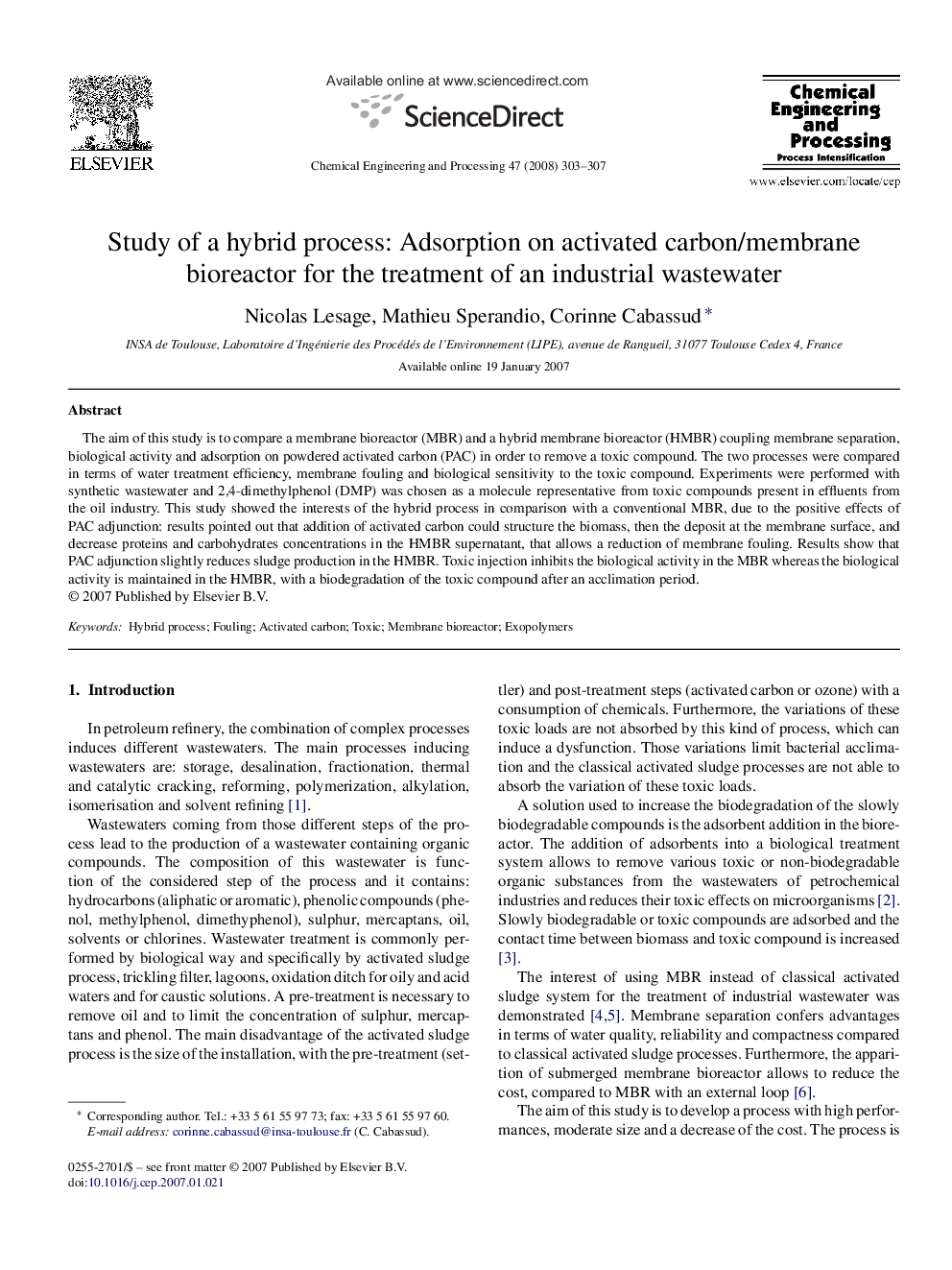| Article ID | Journal | Published Year | Pages | File Type |
|---|---|---|---|---|
| 688113 | Chemical Engineering and Processing: Process Intensification | 2008 | 5 Pages |
The aim of this study is to compare a membrane bioreactor (MBR) and a hybrid membrane bioreactor (HMBR) coupling membrane separation, biological activity and adsorption on powdered activated carbon (PAC) in order to remove a toxic compound. The two processes were compared in terms of water treatment efficiency, membrane fouling and biological sensitivity to the toxic compound. Experiments were performed with synthetic wastewater and 2,4-dimethylphenol (DMP) was chosen as a molecule representative from toxic compounds present in effluents from the oil industry. This study showed the interests of the hybrid process in comparison with a conventional MBR, due to the positive effects of PAC adjunction: results pointed out that addition of activated carbon could structure the biomass, then the deposit at the membrane surface, and decrease proteins and carbohydrates concentrations in the HMBR supernatant, that allows a reduction of membrane fouling. Results show that PAC adjunction slightly reduces sludge production in the HMBR. Toxic injection inhibits the biological activity in the MBR whereas the biological activity is maintained in the HMBR, with a biodegradation of the toxic compound after an acclimation period.
